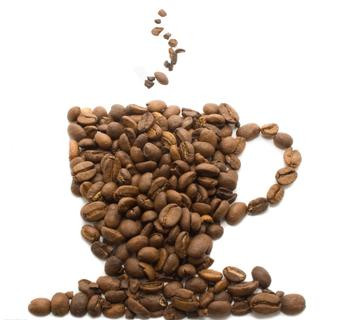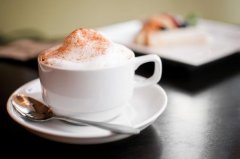How to identify high-quality coffee beans?
Friends who like to drink coffee must know very well that if you want to drink a cup of delicious coffee, it not only has something to do with the coffee machine and barista's technology, but also has a lot to do with coffee beans. As the saying goes, "A clever housewife cannot make bricks without rice." if the quality of the selected coffee beans is not good, or expired or roasted poorly, it must be difficult for a skilled barista to produce a cup of high-quality coffee. So if you want to drink a good cup of coffee, you should first choose roasted high-quality coffee beans, high-quality coffee beans. At this point, some friends may ask, so how to select high-quality coffee beans? Here, the author will share with you, hoping to give you some reference and guidance when choosing coffee beans in the future.

How to identify high-quality coffee beans? In the identification of coffee beans, if it is some very experienced coffee lovers may know how to smell, see, peel, several identification steps, the following I will talk about these three steps.
one。 Smell, the smell mentioned here is not the "smell" in traditional Chinese medicine, the "smell" in this is the sense of smell. When buying coffee beans, you first have to grab a hand to your nose to see if you can clearly smell the strong aroma of coffee, and how it means that the coffee beans are fresh. anyway, if you smell a faint fragrance, oil smell or greasy smell, it means that the coffee beans are not fresh enough, it is better not to buy such coffee beans.
two。 Look, when choosing and buying coffee beans, we should grasp a handful of beans to spread out and determine the origin and variety of coffee beans as well as the uniform degree of baking. If the coffee beans of fresh and good quality are round and full in shape, they have luster, uniform particle size and no incomplete beans, because some bad traders will be inferior.
three。 Peel, take a coffee bean at will, if it is fresh coffee beans will be easily peeled, and there will be a crisp sound. If the peeled beans are the same color as the outside, it means that the firepower is uniform when baking, and it takes a lot of effort to peel off the stale coffee beans, and the firepower is not uniform enough, and the beans peeled out are of different color.
Important Notice :
前街咖啡 FrontStreet Coffee has moved to new addredd:
FrontStreet Coffee Address: 315,Donghua East Road,GuangZhou
Tel:020 38364473
- Prev

Common roaster types of coffee beans at present
(1) Common roaster types 1. The hot air type bean dryer uses the blower to absorb the air, and then let the air raise its temperature through a heating coil, and use the hot air as the heating source to bake the coffee beans. hot air can not only provide the temperature needed for baking. you can also use the power of air to stir coffee beans and kill two birds with one stone. Advantages: high thermal efficiency, fast heating, raw beans
- Next

A brief Analysis of the skills of Coffee Cream Flower drawing
First, the production of coffee milk foam 1, the use of Italian coffee machine (1) the use of special steel cups, the top is narrow and the lower width is easy to form a whirlpool, pour in the fresh milk until it is full. (2) first let the steam drain, then let the steam pipe nozzle form a 45-degree angle with the surface of the milk, and insert the steam pipe into the fresh milk about 1 cm. Open the steam valve and start heating, making the fresh milk whirlpool, so that the steam and fresh milk are fully mixed to produce milk bubbles. (
Related
- Beginners will see the "Coffee pull flower" guide!
- What is the difference between ice blog purified milk and ordinary milk coffee?
- Why is the Philippines the largest producer of crops in Liberia?
- For coffee extraction, should the fine powder be retained?
- How does extracted espresso fill pressed powder? How much strength does it take to press the powder?
- How to make jasmine cold extract coffee? Is the jasmine + latte good?
- Will this little toy really make the coffee taste better? How does Lily Drip affect coffee extraction?
- Will the action of slapping the filter cup also affect coffee extraction?
- What's the difference between powder-to-water ratio and powder-to-liquid ratio?
- What is the Ethiopian local species? What does it have to do with Heirloom native species?

